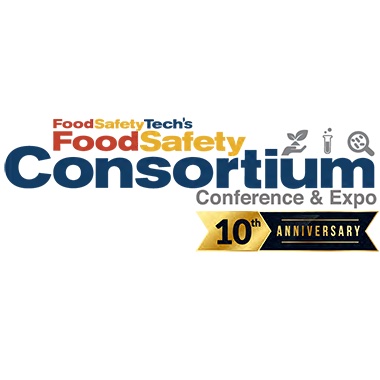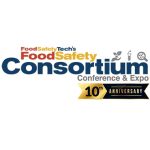The 10th Annual Food Safety Consortium will take place in person October 19-21 in Parsippany, New Jersey. The 2022 program features panel discussions and breakout sessions that address key issues, challenges and opportunities for food safety and quality professionals.
Keynote “Leading with Science at FSIS” – Dr. Denise Eblen, Assistant Administrator, Office of Public Health Science, USDA, Food Safety & Inspection Service
The three-day consortium will open at 1:00pm on October 19. The keynote address and Q&A with Dr. Eblen of the USDA FSIS will be followed by panel discussions on the State of the Food Safety Industry, moderated by Dr. Darin Detwiler, Director of the Master of Science in the Regulatory Affairs of Food and Food Industries, Northeastern University, and Food Safety Culture: Communicating to the C-Suite, moderated by Deb Coviello, founder of Illumination Partners, followed by an opening night networking reception.
Days two and three feature panel discussions covering food safety culture, technology, supply chain and reformulation challenges and compliance concerns, as well as a presentation by Frank Yiannas, FDA Deputy Commissioner for Food Policy and Response. Attendees can join the faculty of more than 25 top-level food safety and quality professionals to discuss:
Food Safety & Quality 4.0: Data Analytics and Continuous Improvement: Jill Hoffman, Senior Director, Food Safety and Quality, B&G Foods, Gina Kramer, Director Partnerships & Learning, Center for Foodborne Illness & Prevention, OSU, and Steven Mandernach, Executive Director, AFDO
Quality & Manufacturing Efficiency: How Does Quality Show Value to the Organization? Gary Smith, Vice President of Quality Systems, Gourmet Foods and Gift Baskets, 1800FLOWERS.COM and John Butts, Founder & Principal, Food Safety By Design
Food Defense & Cybersecurity: Jason Bashura, Senior Manager, Global Defense Pepsi Co.
Diversification of Supply Chain Capacity: Trish Wester, President, Association for Food Safety Auditing Professionals, and Allison Milewski, Sr. Director, US Brand Quality, Mondelēz International
COVID-19 & Food Supply (Research Presentation): Presented by Dr. Donald Schaffner, Rutgers University and Dr. Ben Chapman, North Carolina State University
Product Reformulation Challenges: April Bishop, Senior Director Food Safety TreeHouse Foods, Peter Begg, Vice President Quality and Food Safety, Hearthside Food Solutions and Ann Marie McNamara, Vice-President Food Safety and Quality for Supply Chain, US Foods
Blending Employee Culture with Food Safety Culture: Melody Ge, FSQA Director, StarKist, Co., Mitzi Baum, CEO, STOP Foodborne Illness and Elise Forward
The Crossroads of Strategic, Tactical and Operational Planning in Food Safety Culture: Jill Stuber and Tia Glave, Co-Founders Catalyst
Biggest FSQA Challenges: Shawn Stevens, Attorney, Food Industry Counsel, Jorge Hernandez, VP, Quality Assurance, The Wendy’s Company, and Elise Forward, Founder & Principal Consultant, Forward Food Solutions
FSQA Technology: How Far is Too Far? How to properly analyze new FSQA technology before you sign the purchase order. Gary Smith, 1800FLOWERS.COM, Jorge Hernandez, The Wendy’s Company, and Peter Begg, Hearthside Food Solutions
Risk Assessment: Peter Begg, Hearthside Food Solutions, and Melanie Neumann, EVP & General Counsel, Matrix Sciences International
Audits: Blending in-person with Remote: Laurel Stoltzner, Corporate QA Manager OSI Industries, and Trish Wester, Association for Food Safety Auditing Professionals
Preparing the Next Generation of FSQA Leaders: Dr. Darin Detwiler, Northeastern University, Ann Marie McNamara, US Foods, and Dr. Don Schaffner, Rutgers University
View the full agenda.
Don’t miss out on opportunities to network with other food safety and quality professionals during the opening night reception, networking lunches and coffee breaks, and the Women in Food Safety cocktail reception on October 20.
Registration options are available for in-person and hybrid team attendance.
Event Hours
- Wednesday, October 19: 1:00 pm – 6:30 pm (ET)
- Thursday, October 20: 8:00 am – 7:00 pm (ET)
- Friday, October 21: 8:00 am – 12:30 pm (ET)
Register today at foodsafetyconsortium.org.









